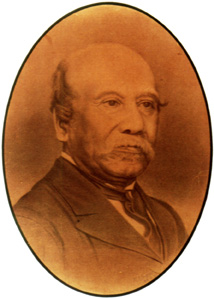
George Chinnery was the most significant figure in South China's artistic world during the first half of the nineteenth century. Within the context of the aesthetic and artistic exchanges which took place between East and West, Chinnery's is the name which dominated Macau for a quarter of a century with a school of disciples, students and unknown followers in Macau, Hong Kong and Canton.
Of all those whom he influenced, from Lamqua to the China Trade copiers, it is perhaps in the work of Marciano Baptista that the blending of these two cultures can best be seen. Although the results were not always perfectly harmoniously assimilated, Marciano was at least true to himself in opening up the way to what would eventually be the "New Schools" of Oriental painting from Canton to Japan.
Macau's greatest nineteenth century artist is the unanimous opinion of observers and critics alike. Marciano Baptista reveals himself through the purity of his Macanese origins. Not only in the timbre of the land and his blood but through the way he managed to combine two universes in his art. While Chinnery took pride in his skill at painting in the European style, Marciano brought together the two cultures in the kind of mélange which has been the territory's cultural vocation since the mid-sixteenth century.
After a long period of being undeservedly ignored, Marciano Baptista was finally brought back into the public arena in an exhibition organised by César Guillén Nuñez.
RC is honoured to dedicate the following pages of this issue to paying tribute to the greatest Macanese artist of the nineteenth century.
start p. 162
end p.